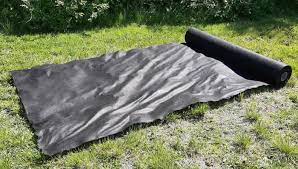Geotextiles have a great impact on modern buildings by stabilizing the ground, improving drainage and filtration, separating aggregates and dispersing the loads imposed. Ensuring that you choose the right geotextile for the project means knowing the difference between them. The key is whether they are woven or non-woven. Now let us distinguish woven and non-woven geotextile through the my post.
What Is Geotextiles Fabrics?
Geotextiles are fabrics used for geotechnical applications. Such as highway and railway embankments, earth embankments and coastal protection structures. Additionally, It designed to perform one or more basic functions, such as filtration, drainage, soil layer separation, reinforcement or stabilization.
Woven geotextiles
Basically, woven geotextiles are made by weaving individual yarns on a loom to form a uniform length. Different materials can be used. These materials are such as slit film, fibrilized yarn and monofilament. But the weaving technology is constant regardless of the material used.
This ensures the strength of the woven geotextile, making it an excellent choice for road construction, under the driveway, residential streets, highways and other applications.
Woven geotextiles have poor water permeability, with only a few exceptions, so they are not the best choice for drainage works. On the contrary, they are very suitable for long-term separation and reinforcement applications and are corrosion resistant.
Non-woven geotextile
Although the tensile strength of nonwoven geotextile is lower than that of woven fabric. However it still has strong strength, durability and excellent drainage performance.
Nonwoven geotextile is a kind of felt-like fabric, which is made by thermally bonding polypropylene or a mixture of PP and polyester fibers. And then it is finished by needling, calendering and other methods.
This type of geotextile is easier to cut. It has high water permeability. And also it will not lose its strength over time. In the same way as woven fabrics used underground. This makes it very suitable for use under driveways and roads and in land and rainwater drainage systems. Three situation of above mention require long-term ground stabilization and filtration.

Difference Between Wovens Geotextiles And Non-wovens
There are significant differences between woven geotextiles and nonwoven geotextiles, especially in their application and manufacturing methods. The type of project you are working on will determine the geotextile that is most suitable for you. The main differences between woven geotextile and nonwoven geotextile are as follows:
- Firstly, woven geotextiles are the best choice for reinforcement and stabilization applications, while nonwoven geotextiles are very suitable for filtration, separation and drainage applications.
- Secondly, woven geotextiles (with a few exceptions) are semi-impermeable and have a low flow rate, while nonwoven geotextiles are permeable and have a high flow rate.
- Thirdly, woven geotextile has high bearing capacity and tensile strength, and is usually used for road construction, while nonwoven geotextile is usually measured by weight.
- Both woven and nonwoven geotextiles can be made of polyester or polypropylene yarn or fiber.